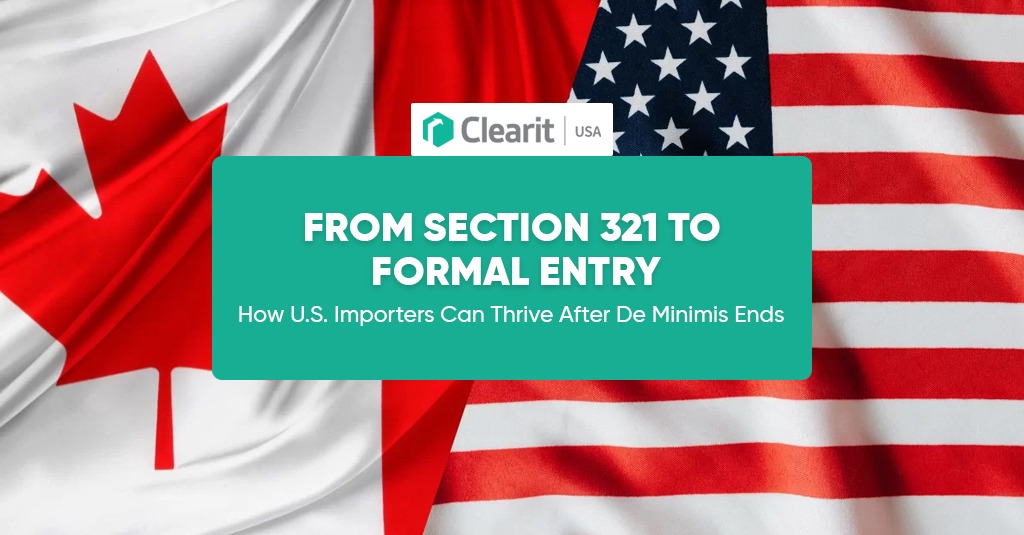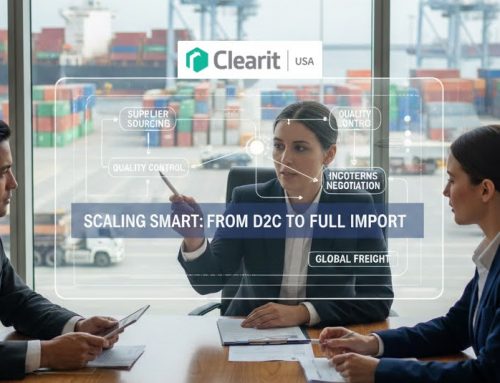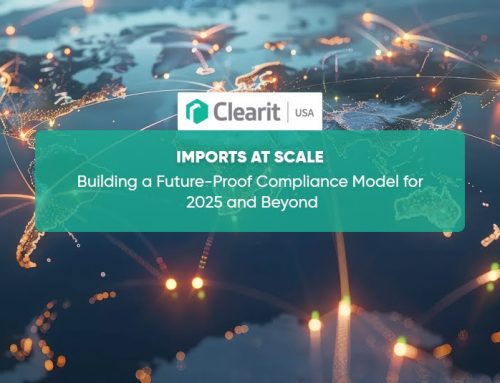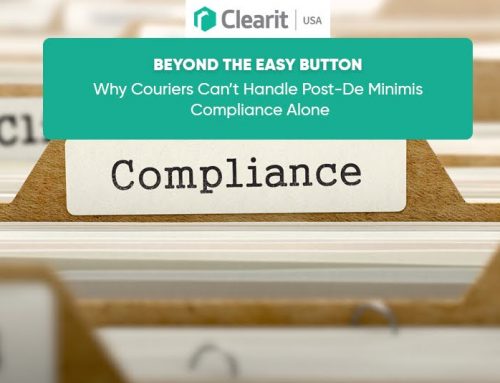For years, Section 321 allowed U.S. importers to bring in shipments valued at $800 or less without paying duties or filing formal customs paperwork. This “De Minimis” rule made it possible for e-commerce sellers and small businesses to import thousands of low-value parcels each day — fast, cheap, and duty-free.
But that free pass is coming to an end. By August 2025, U.S. Customs and Border Protection (CBP) is expected to eliminate the $800 De Minimis threshold, reshaping how every importer, from Amazon sellers to established distributors, does business.
So, what happens when every shipment requires formal entry? Let’s break down how importers can stay compliant, control costs, and thrive in the post–De Minimis world.
The End of the “$800 Free Pass”
Section 321 was designed to simplify low-value imports. For years, it gave businesses a way to ship goods directly from overseas warehouses to U.S. customers with minimal red tape.
However, it also created loopholes for undervaluation, misclassification, and lost tariff revenue for the U.S. government. With trade enforcement tightening, the U.S. is set to remove the De Minimis threshold entirely, meaning that every shipment, no matter its value, will require customs clearance.
This shift will significantly affect e-commerce sellers, fulfillment centers, and SMBs that have relied on the $800 exemption.
What Section 321 Elimination Means for Importers
Once Section 321 is gone, all shipments will require formal customs entry, even those valued below $800. That means:
- Duties, taxes, and brokerage fees will apply to every shipment.
- Full documentation (commercial invoice, packing list, classification, and valuation) will be mandatory.
- Courier services like FedEx or UPS will no longer be the most efficient route for small-value shipments.
- The demand for licensed customs brokers will surge as importers seek compliance expertise.
For small importers, this shift can feel overwhelming, but it’s also an opportunity to build sustainable, transparent logistics systems that minimize the hidden costs of importing for small businesses.
The Transition to Formal Entry: Key Requirements
In a post–De Minimis environment, every shipment will follow the same formal entry process that applies to larger imports today. Importers will need:
- A valid Customs Bond (continuous or single-entry)
- A CBP Form 7501 (Entry Summary) filed electronically
- Commercial invoices and packing lists that match declaration values
- A valid Importer of Record (IOR) number or a licensed customs broker
- Proper tariff classification and valuation for each product
Digital brokers can help automate this process through the Automated Commercial Environment (ACE), CBP’s online portal for entry filing. With ACE integration, importers can manage compliance data, duty calculations, and status tracking in real time.
For a broader understanding of how new tariffs and duty structures may affect your business, explore U.S. Import Tariffs 2025: A Complete Guide to Business Impact.
How SMB Importers Can Stay Competitive
Small and mid-sized importers will face higher operational costs once De Minimis disappears, but strategic planning can offset those expenses.
1. Consolidate Shipments
Rather than shipping hundreds of small parcels, combine orders into bulk shipments and clear them under a single customs entry. This lowers per-unit costs and simplifies documentation.
2. Use a Single Customs Broker
Working with one broker provides visibility across all entries and ensures consistent tariff classification and valuation.
3. Adopt the First Sale Rule
Under the First Sale Rule, importers can legally declare the transaction value from the first sale in a multi-tier supply chain, reducing the dutiable value and saving money.
4. Prepare for Tariff Audits
CBP is expected to increase post-entry audits after the De Minimis elimination. Work with your broker to regularly review data, invoices, and classification records to avoid penalties.
5. Reassess Pricing and Valuation
With duties applied to every shipment, importers should reevaluate pricing structures to maintain margins. Accurate valuation helps maintain compliance while protecting your profit margins.
Learn more about how tariffs influence cost structures in Tariff Pass-Through: How Duties Impact Inflation for U.S. Importers.
Common Pitfalls During the Transition
The shift from Section 321 to formal entry will challenge even experienced importers. Avoid these common mistakes:
- Assuming courier shipments remain duty-free
- Forgetting to secure a customs bond
- Submitting incomplete commercial invoices
- Misclassifying HS codes or under-declaring value
- Lacking a system for tracking multiple small imports
Importer Readiness Checklist
- Register or verify your Importer of Record (IOR) number
- Obtain a continuous customs bond
- Audit your tariff classifications
- Review all supplier invoices for accuracy
- Choose a digital customs broker
Technology & Automation: The Future of U.S. Customs Brokerage
Formal entry may sound complex, but automation makes it manageable.
Modern, digital-first customs brokers can now automate ACE filings, provide real-time tariff updates, and integrate directly with e-commerce and ERP systems. This shift from paper-based to digital compliance means importers can process entries faster, reduce manual errors, and maintain visibility into every shipment.
Automation also helps ensure compliance with changing tariff rules — such as those discussed in our article U.S.–China Tariffs Explained.
Conclusion
The elimination of Section 321 marks the end of an era, but not the end of opportunity.
While importers will face new compliance demands, those who embrace structure, digital tools, and proactive planning will thrive in the post–De Minimis trade landscape.
The De Minimis era is ending, but your import business can still grow. Review your shipment strategy today to stay compliant, cost-effective, and ready for 2025.
FAQs
Q1: When will the De Minimis threshold officially end?
The change is expected in August 2025, though the exact date will depend on final U.S. trade implementation.
Q2: What’s the difference between Section 321 and formal entry?
Section 321 allowed imports valued under $800 to enter duty-free without formal documentation. After elimination, every shipment requires full customs clearance, a bond, and proper valuation.
Q3: Will small businesses be affected the most?
Yes. SMBs relying on small, frequent shipments will see increased costs. Consolidating shipments and adopting automation can help control expenses.
Q4: How can importers lower costs post-De Minimis?
Consolidate shipments, use the First Sale Rule for valuation, and work with a single digital broker to streamline processes.
Q5: Are couriers like UPS or FedEx still viable for small imports?
For last-mile delivery — yes. But for customs processing, brokerage-led formal entries are more efficient and cost-effective long-term.
Q6: What is a customs bond and why will I need one?
A customs bond is a financial guarantee between importers, their brokers, and CBP ensuring all duties and taxes will be paid. It’s required for every formal entry after De Minimis ends.
Q7: How can digital customs brokers simplify the transition?
They automate ACE filings, manage compliance data, and reduce per-entry costs — ensuring importers stay efficient and penalty-free.



